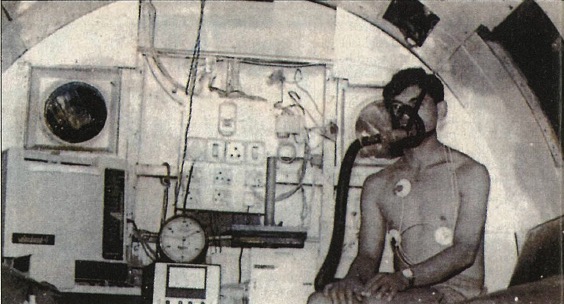By DIPANKAR DAS, NEW DELHI
What do you think is the latest addition to the Indian armed forces’ arsenal? Early warning systems, Ishapur assault rifles or stealth technology? Wrong. The latest weapon in its armory is yoga. Introducing yoga into the army’s training curriculum is not intended to stand the forces on their heads, but rather to brace soldiers for the extremes of weather they have to endure in high altitude climatic zones. The innovations come from the Defense Institute of Physiological and Allied Sciences (DIPAS), whose job is to evolve holistic ways to acclimatize soldiers to adverse operational terrains, such as deserts, high mountains and under water.
The idea occurred to the director of DIPAS, Dr. W. Selvamurthy, as he wondered how it was possible for lightly-dressed sadhus to roam the Himalayas in sub-zero temperatures, while the Indian soldiers stationed in Siachen, Leh and other cold places suffer terrible privations even with ample warm clothing. Experiments began in early 1985. One group of soldiers was made to practice fifty minutes of yoga and five minutes of pranayama (breath control) and meditation daily for six months, while another group continued the regular army drills and endurance training. Wearing just boxer shorts, both groups were put in chambers at 10¡ C (50¡F). Those trained in yoga were able to retain their body heat longer than those who did the routine exercises. Shivering started much later in the yoga group, who maintained a higher rate of metabolic activity.
The discovery took time to be accepted in army circles. But by 1995 it was introduced as a part of the regular curriculum, especially for soldiers in the Northern Command. The training is also expected to help combat melancholia, a common problem at high attitudes.
Experiments by Selvamurthy have demonstrated physical health benefits of yoga, such as lowering of blood pressure. In yet another test, he measured an increase in tranquillity as a result of performing agnihotra, a Vedic fire ritual. He’s now testing an herbal preparation based on ayurvedic formulas for high-altitude use.
Selvamurthy, 46, has come far from the days when people were amused to hear he wanted to make yogis out of the soldiers. “I would give them the example of Arjuna, who was a great yogi and warrior,” he reminisces. Now it is his ambition to “spread the message of our traditional systems of yoga and medicine because modern medical care in a country of 900 million is too expensive, while our indigenous systems are prophylactic. Our people are intellectually very sound, but when it comes to looking after their health, they just don’t bother.”
